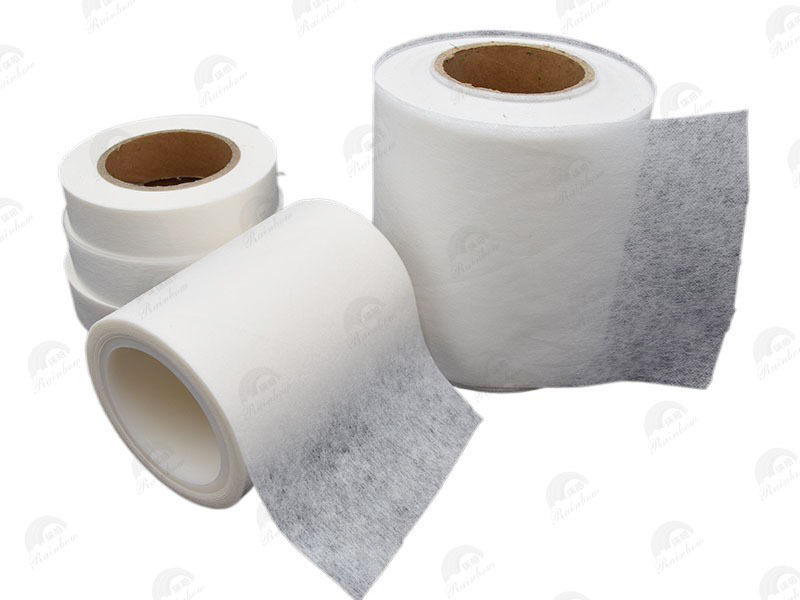Understanding the Benefits of Nonwoven Fabric for Sterilization Wraps
Release time:
2025-06-07
Understanding the Benefits of Nonwoven Fabric for Sterilization Wraps
Nonwoven fabrics have revolutionized various industries, particularly in the medical sector, where the need for effective sterilization wraps is paramount. As healthcare facilities worldwide strive to maintain the highest standards of hygiene and safety, the adoption of nonwoven fabrics for sterilization wraps has become increasingly popular. This article delves into the myriad benefits of nonwoven fabric in sterilization wraps, highlighting why they are an indispensable asset in modern healthcare.
What is Nonwoven Fabric?
Nonwoven fabric is a type of textile material made from bonding fibers together through various methods, such as mechanical, chemical, or thermal processes. Unlike traditional woven fabrics, nonwoven fabrics do not require weaving or knitting, which allows for more versatile applications. The unique structure of nonwoven fabrics offers several advantages, making them ideal for sterilization wraps in medical settings.
The Composition of Nonwoven Fabrics
Nonwoven fabrics are primarily composed of synthetic fibers, such as polypropylene, polyester, and polyethylene. These materials are chosen for their durability, lightweight nature, and resistance to moisture and bacteria. The specific composition and layering of these fibers can be tailored to create fabrics with different properties, such as increased strength, breathability, and fluid resistance, making them suitable for various applications, including sterilization.
Why Choose Nonwoven Fabric for Sterilization Wraps?
The choice of nonwoven fabric for sterilization wraps comes with several compelling advantages. Understanding these benefits is crucial for healthcare providers looking to enhance their sterilization processes.
1. Excellent Barrier Properties
Nonwoven fabrics provide a superior barrier against contaminants, fluids, and bacteria. This is critical in healthcare settings where maintaining a sterile environment is essential. The layered structure of nonwoven fabrics can effectively prevent the penetration of microorganisms, ensuring that surgical instruments and other medical devices remain sterile until they are ready for use.
2. Enhanced Breathability
Breathability is a vital characteristic for sterilization wraps, as it allows gases used in sterilization processes, such as ethylene oxide, to penetrate the fabric effectively. Nonwoven fabrics are designed to offer excellent air permeability, which ensures that sterilization agents can circulate freely, leading to more effective sterilization while maintaining the integrity of the wrapped items.
3. Lightweight and Easy to Handle
Nonwoven fabrics are significantly lighter than traditional woven fabrics, making them easier to handle and apply in various medical settings. Their lightweight nature facilitates quick and efficient wrapping of instruments, reducing the time required for preparation before surgical procedures.
4. Cost-Effectiveness
Using nonwoven fabric for sterilization wraps can lead to significant cost savings for healthcare facilities. The production of nonwoven fabrics is generally more economical than traditional woven materials, and their durability means they can withstand multiple sterilization cycles without compromising their protective properties. This longevity reduces the need for frequent replacements, further driving down costs.
5. Versatility in Applications
Nonwoven fabrics can be engineered to suit various sterilization methods, including steam, ethylene oxide, and hydrogen peroxide gas plasma sterilization. This versatility ensures that healthcare providers can select the appropriate nonwoven fabric for their specific sterilization needs, optimizing the efficiency and effectiveness of their sterilization processes.
The Role of Nonwoven Fabrics in Infection Control
Infection control is a top priority in healthcare settings, and nonwoven fabrics play a pivotal role in achieving this goal. The use of nonwoven sterilization wraps can significantly reduce the risk of healthcare-associated infections (HAIs) by providing an effective barrier against pathogens.
Reducing the Risk of Contamination
Nonwoven sterilization wraps help minimize the risk of contamination during surgical procedures. By maintaining the sterility of surgical instruments and medical devices, nonwoven fabrics contribute to safer patient outcomes and lower rates of infections.
Supporting Compliance with Regulatory Standards
Using nonwoven fabrics for sterilization wraps helps healthcare facilities comply with stringent regulatory standards for infection control. Many nonwoven materials are tested and certified to meet specific guidelines, ensuring that healthcare providers can rely on their performance during critical procedures.
Technical Specifications of Nonwoven Sterilization Wraps
Understanding the technical specifications of nonwoven sterilization wraps is essential for selecting the right product for specific medical applications. Here are some key attributes to consider:
Fabric Weight and Thickness
The weight and thickness of nonwoven fabrics can impact their effectiveness as sterilization wraps. Typically, heavier and thicker nonwoven fabrics provide better barrier properties, making them ideal for wrapping high-risk instruments. However, the balance between weight and breathability must be maintained to ensure optimal sterilization.
Pore Size and Filtration Efficiency
The pore size of nonwoven fabrics directly affects their filtration efficiency. Nonwoven sterilization wraps should have a pore size small enough to prevent bacterial penetration while still allowing for the effective passage of sterilization gases.
Biocompatibility
Biocompatibility is an essential consideration for any material used in medical applications. Nonwoven fabrics must be tested for biocompatibility to ensure they do not cause adverse reactions when in contact with sterile instruments or tissues.
Environmental Considerations
As the demand for sustainable practices in the healthcare industry grows, the environmental impact of materials used in medical applications has come under scrutiny. Nonwoven fabrics offer several environmentally friendly options, including the potential for biodegradability and recycling.
Eco-Friendly Nonwoven Options
Many manufacturers are now producing nonwoven fabrics from biodegradable materials, which can break down more easily in landfills or composting facilities. Additionally, some nonwoven fabrics are made from recycled materials, reducing the overall environmental footprint of medical waste.
Reducing Waste Through Efficient Use
The lightweight and durable nature of nonwoven sterilization wraps can contribute to waste reduction. Their ability to withstand multiple sterilization cycles can lead to fewer replacements and less overall waste generated in healthcare settings.
Choosing the Right Nonwoven Fabric for Your Needs
Selecting the appropriate nonwoven fabric for sterilization wraps requires careful consideration of various factors. Here are some tips to guide healthcare providers in making an informed choice:
Assessing Sterilization Methods
Different sterilization methods require specific types of nonwoven fabrics. It is essential to assess the sterilization processes used in your facility and choose nonwoven wraps that are compatible with those methods to ensure maximum efficacy.
Evaluating Material Properties
When selecting nonwoven fabrics, healthcare providers should evaluate the material properties that align with their needs. Consider factors such as barrier properties, breathability, weight, and durability to make an informed choice.
Consulting with Manufacturers
Working closely with manufacturers can help healthcare providers understand the various options available in the market. Manufacturers can provide valuable insights into product specifications, performance data, and best practices for using nonwoven sterilization wraps effectively.
FAQs about Nonwoven Sterilization Wraps
1. What are the primary benefits of nonwoven fabrics for sterilization wraps?
The primary benefits include excellent barrier properties, enhanced breathability, lightweight handling, cost-effectiveness, and versatility in applications.
2. How do nonwoven fabrics compare to woven fabrics for sterilization?
Nonwoven fabrics provide superior barrier protection, are lighter, and often more cost-effective than woven fabrics, making them ideal for sterilization applications.
3. Can nonwoven sterilization wraps be reused?
While nonwoven wraps are designed for single use, certain types of nonwoven materials can withstand multiple sterilization cycles without losing their protective properties. However, healthcare facilities should follow manufacturer guidelines.
4. Are nonwoven sterilization wraps environmentally friendly?
Many nonwoven sterilization wraps are made from biodegradable materials or recycled fibers, making them more environmentally friendly than traditional options.
5. How can I ensure compliance with sterilization standards using nonwoven fabrics?
Choosing nonwoven fabrics that meet industry standards and guidelines for biocompatibility and barrier protection can help ensure compliance with sterilization standards.
Conclusion
In conclusion, the benefits of using nonwoven fabric for sterilization wraps are undeniable. From their superior barrier properties to their lightweight nature and cost-effectiveness, nonwoven fabrics have become a cornerstone in maintaining high standards of hygiene and safety in healthcare settings. As the industry continues to evolve, the demand for innovative and environmentally friendly materials like nonwoven fabrics will only grow. By understanding the advantages and proper applications of nonwoven sterilization wraps, healthcare providers can make informed decisions that enhance patient safety and improve operational efficiency. Embracing nonwoven technology is not just a trend; it is a step towards a more effective and sustainable future in healthcare.
Sterilization Wrap Nonwoven Fabric
Previous Page
Previous Page
Latest News
Nantong Rainbow Technology Co., Ltd.
Telephone:+86-13587673537
E-mail:chrislc717@163.com
Address: Group 42, Xizansi Village, Xiting Town, Tongzhou District, Nantong City, Jiangsu Province

Copyright©2024 Nantong Rainbow Technology Co., Ltd. | Powered by www.300.cn
Copyright©2024 Nantong Rainbow Technology Co., Ltd.
Powered by www.300.cn




